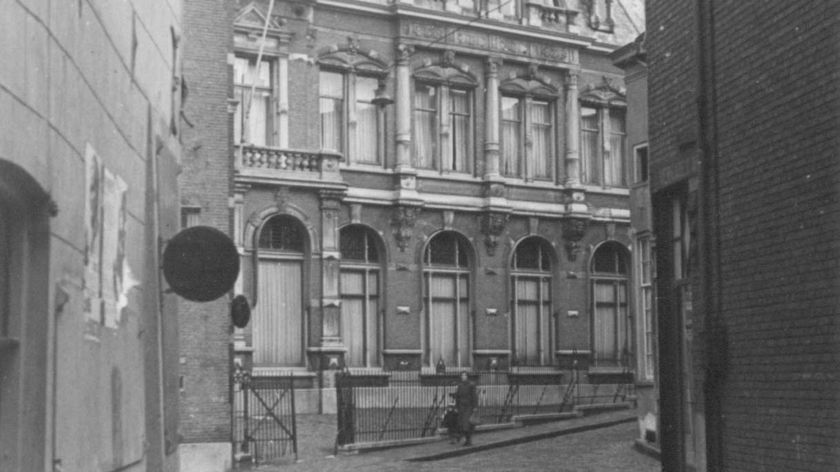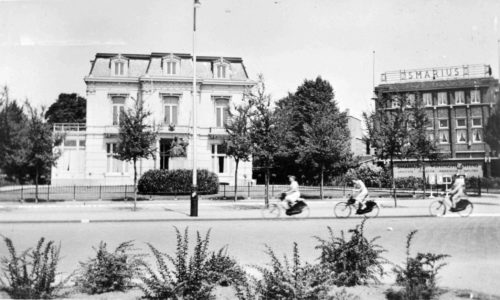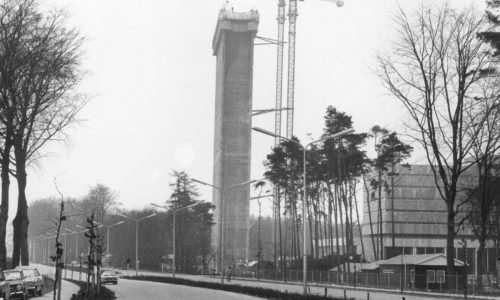Photo series – Then & Now (3): The Library and Institute Building in 1939
In the olden days the university didn’t have a campus, and its buildings were spread all over town. To commemorate Radboud University’s 95th anniversary, VOX hit the archives. What’s changed? Today: The Library and Institute Building in the lower town.
In 1923, the year the university was founded, the Radboud Foundation purchased a mixed set of buildings in the lower town, intended to house the thousands of books and the various institutes of the first three faculties: Theology, Arts & Philosophy, and Law. Especially in the early days, the buildings caused the university much grief.
A former bank, a few houses, a cigar factory and a wine warehouse on the Snijderstraat and Muchterstraat. These were combined in 1923 to form the Library and Institute Building of the Catholic University Nijmegen. The location wasn’t great, but lack of funding left the university with little choice (special denomination universities only got funding after 1948). The combined buildings formed a labyrinth of corridors and staircases, but their neo-classical architecture gave them a stylish appearance from the outside.
Book Problems
The large book collection immediately caused serious problems. As a result of lack of storage and humidity (mould) in the preliminary library, the librarian (H. De Vries de Heekelingen) found himself in a predicament. He wrote an urgent letter to the Radboud Foundation. This led to a renovation, which unfortunately did not offer a long-term solution. The library was only ready for use in 1928.
The fact that it took so long for the University Library to open its doors was due first of all to the fact that it had to compete for resources with the institute libraries. Professors had their own reasons for complaining. There was a great shortage of study space. Students could only study in the Institute Building for two afternoons a week, because the professors needed the rooms to teach lectures. In the end, new study rooms were created and the problems seemed to be solved. Another factor that slowed down construction was the question of whether the university would remain in the lower town. There was talk of relocating to new buildings on the Wedren, but after much discussion this was deemed too expensive.
After the university was forced to close its doors in April 1943, the Library continued to loan out books to students (some of them in hiding). After World War II, the heavily damaged Library and Institute Building was partially restored and used once again as a book depot. But it wasn’t very popular. Users complained about its inconvenient location and the cold. After the new University Library opened its doors in 1967, the lower town building was no longer needed. It was demolished in 1973.
With thanks to Jan Brabers, University Historian. Marjolein van Diejen made the ‘Now’ photograph. ‘Then’ photograph: Nijmegen Regional Archive.
Sources: Rob Wolf, De Trek naar het zuiden: gebouwen van de Katholieke Universiteit Nijmegen 1923-1998 (The Migration South: Buildings of the Catholic University Nijmegen) (Nijmegen 1998) and Jan Brabers et al, Radboud in de Stad: Routeboekje (Radboud in the City: Route Guide) (Nijmegen 2013)



